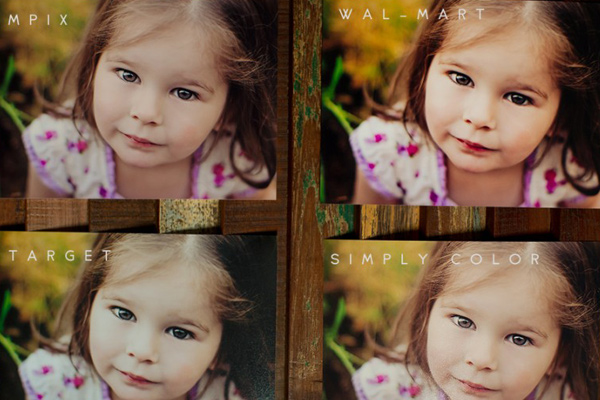
Why Your Print Lab Is So Important
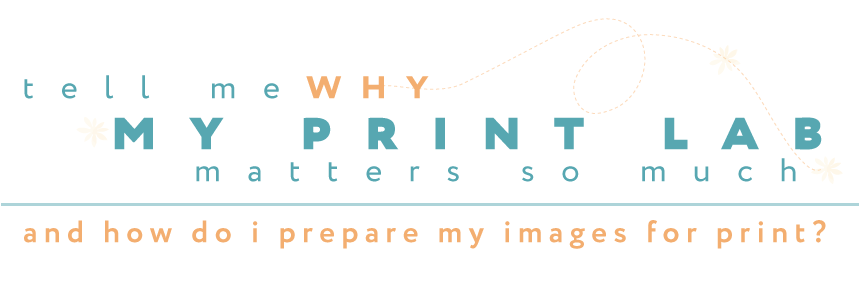
I welcome you to please share the link in order to share the information and images found here, but please do not copy or save my photos. Thank you. You may also pin it on Pinterest using the Pin It button here …
You’ve just finished the perfect session … the lighting was perfect, your clients were amazing to work with, the location and the props you lovingly selected with care were all fabulous. You feel giddy with the excitement of opening those images and seeing the art you captured. You next spend time carefully processing the images to perfection, making sure the color is perfect, the amount of contrast just right right, the details and clarity are spot on. Your clients view their proofs, oohing and ahhing the whole time … did you even see a tear or two in there? Everything is perfect … now who do you trust to print those images that you poured your heart and soul (not to mention time and money) into?
I don’t know about you, but after all that work bringing your photography and vision to fruition, the final product is a step that is of the utmost importance. I have been wanting to do a little demonstration for a while now, sending the same image to different labs and comparing the differences. I initially sent the image to a half dozen different chain/big box type print labs all over our town, but after viewing them I decided to not use most of them for this demonstration because they were all the same. And by the same, I mean both mediocre and wildly different. What?! Bear with me here. Sending your prints to non-pro labs is going to leave you with not only sub-par quality prints, but inconsistent results. The technician running the machine, the calibration of the printer, etc. are all going to influence your final prints. So, what may have come back from Wal-Mart with too strong contrast and a yellow cast one week will look drastically different the next. It’s a coin toss … washed out and blue?? Cyan and blown highlights?? But whatever the results, as inconsistent as they may be, you can count on the quality being inferior to that of a pro lab (or for non pros, MPIX).
I’ve decided to a fairly non-scientific study to compare print quality among several chain labs and my preferred pro lab. This is just to give you a general sense of the drastically different prints non-pro labs will produce, and to compare the quality difference between them and a pro lab. Even in this uncontrolled setting (I laid the images out in natural light, kept the settings the same from image to image and applied no processing after uploading beyond resizing for web in order to keep the playing field as level as possible), the quality difference is apparent.

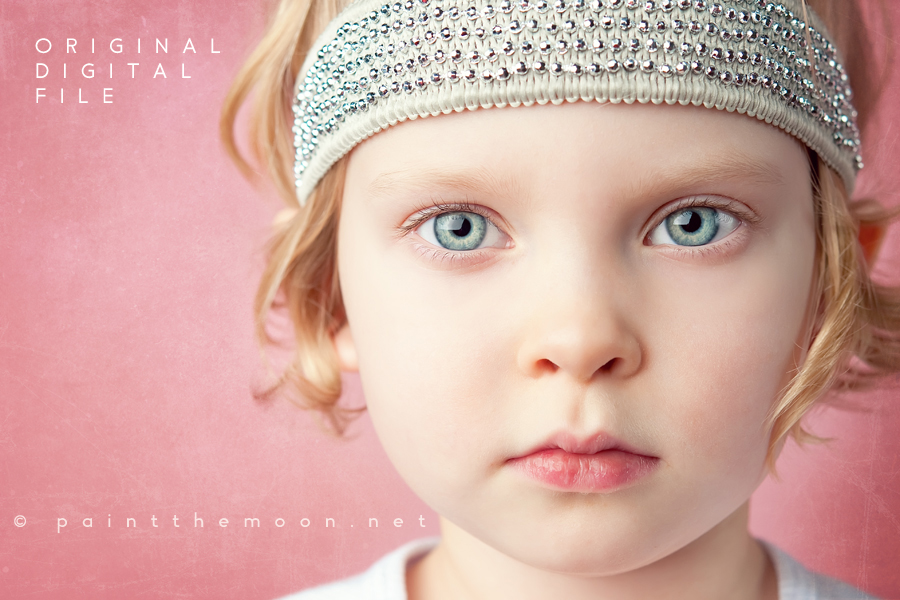
For those interested in viewing the original, unedited image you can view it here.
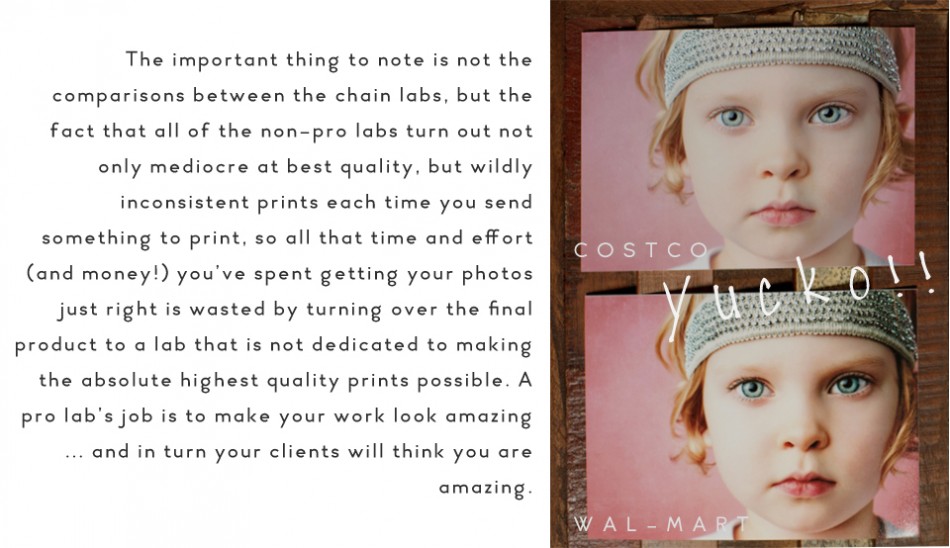
Note that the Simply Color sample is printed on the luster paper as most of the other examples are shown (a few of the labs didn’t have any option available beyond the glossy paper). The Simply Color luster paper print is shown inside the album that I speak of below (I use it in my studio to show clients the different types of paper available for prints). It has a thin black border around the image.

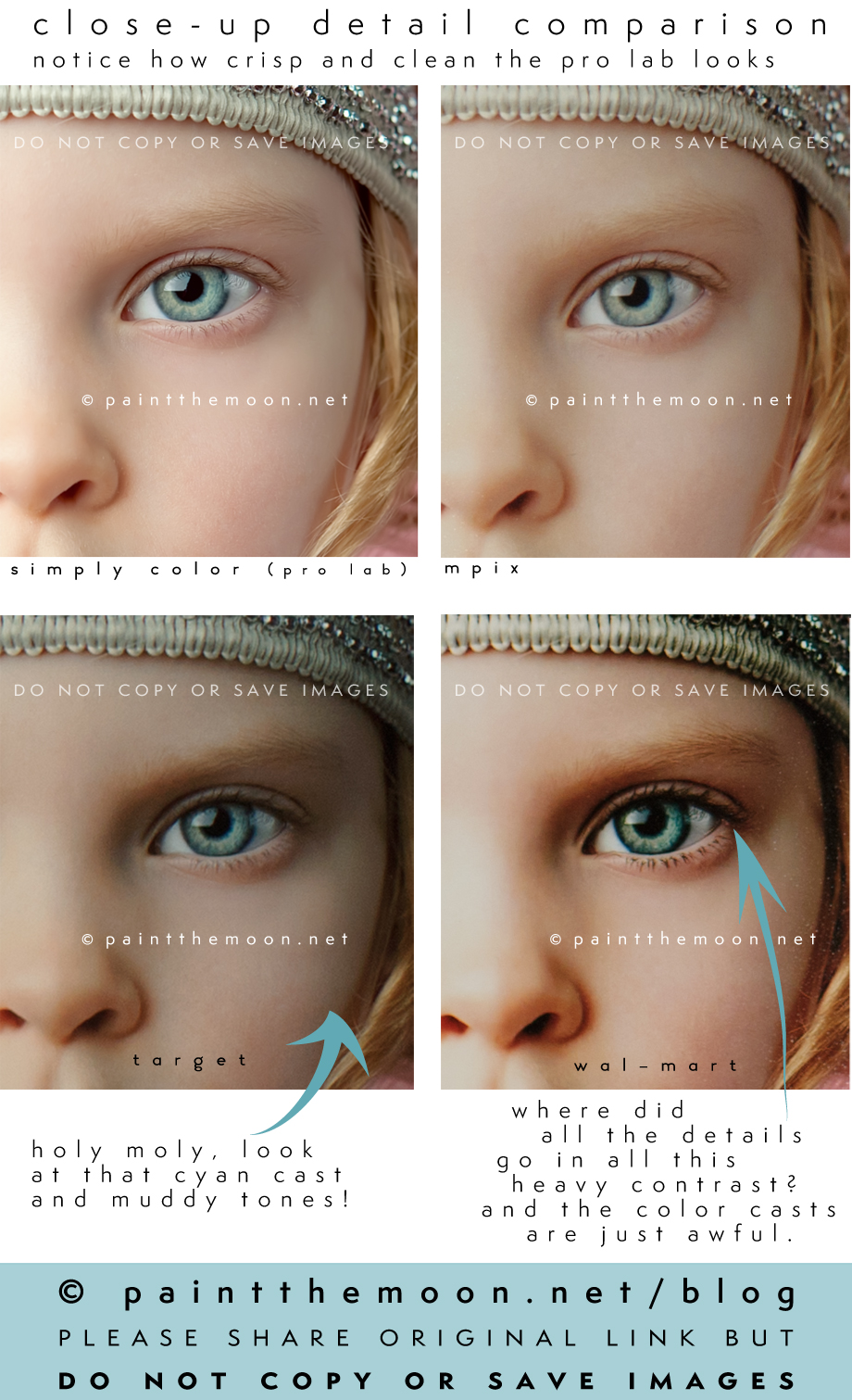
And a second sample …
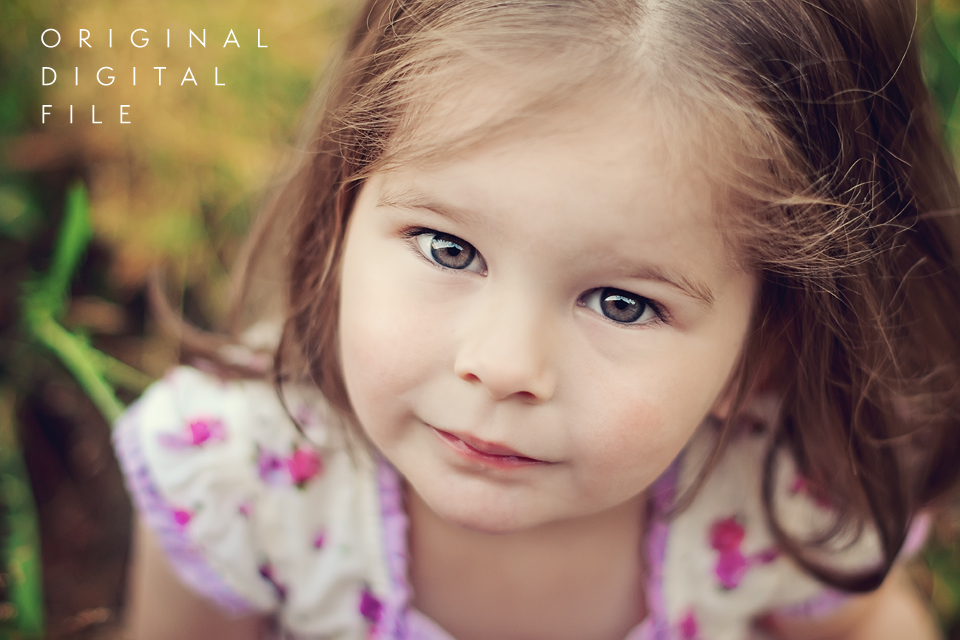
To see this before shot and recipe view here.


Some key points when preparing your images for print.
Calibrate!!
Always do your editing on a calibrated monitor. There is simply no other way to be certain that what you see on your screen is what you will see when your images are printed. This should be done well before you ever start processing your images. I recommend and use the Xrite EODIS3 i1Display Pro.A less expensive alternative is the Xrite CMUNDIS ColorMunki Display1. Keep in mind that there are other steps beyond the monitor calibration process that you’ll need to have done correctly in order to get accurate screen to print color in your images. These include using color profiles correctly (use the color profile recommended by your lab), soft-proofing (ask your lab if they have a soft-proofing profile available and use it) and having appropriate lighting when editing and viewing your images. I know each of these things are big subjects in themselves, but I’m trying to keep this on the simple side and will touch on these subjects in future posts with more in-depth detail.
Color Space, Soft Proofing, File Type and Size
Always refer to your lab before preparing images and uploading. They will have guidelines for color space (which will usually be sRGB or Adobe 1998 RGB – however check with your specific lab as many have their own profiles to use), file type (such as JPEG max quality, TIFF, etc), sizing, resolution, etc. Ask for a soft proofing profile which you can use to view exactly what your prints will look like when printed on their machines (as long as you are calibrated, that is). I like to leave my resolution unchanged in order to leave as much pixel data as possible – the only thing I do is crop if needed for the print’s aspect ratio (see here for details and how to’s), leaving the resolution blank (which leaves my image resolution as it is). But again, check with your lab to make sure you are preparing the files as they need them. Also, be sure to choose NO color/auto correction, especially if you are calibrated and have meticulously processed your image for perfect color – this will guarantee you get not only accurate but consistent results (when working with a reputable pro quality lab).
Sharpen
Sharpen your images for print, zooming in to 100% view to see the actual results. Keep in mind that viewing web sharpening and viewing print sharpening are two different things. I frequently get asked why web images look so much crisper after sharpening versus higher resolution images. What you see in a web size version image will look more dramatic and crisp because you are viewing the image at 100% … to see the actual results and difference in a sharpening action in a full size, high res image I encourage users to zoom in to 100% to see the actual results. 🙂 So apply your sharpening action (after your final crop), zoom in to 100% view (hit command or control + 1) and then toggle the sharpen layer(s) on and off to see the difference. 🙂 Because you usually can’t view the high res image in it’s entirety at 100% size, you won’t be able to see the actual results over the entire image until it’s printed. So, zoom and toggle!
Order sample prints
Almost any pro lab (and MPIX as well) will give you a few test prints for free when you register an account with them. This will allow you to double check your final prints. I strongly recommend doing this before sending any client work to a new lab for print. I choose the option of having a sample Fine Art Album created by Simply Color Lab so I could have an album of examples showing the different types of papers offered by my lab to clients. Most labs will offer a swatch book of samples for free, but I think it holds more value for clients to see your own work in the samples and have them sized large enough to really get a sense of how the different paper options affect the image.

I get this question a lot, so while attempting to not sound like a commercial (the idea to have this extra little bonus came after the fact) I wanted to take a quick minute to explain why after trying numerous other professional labs, I choose to use Simply Color Lab and their sister company Simply Canvas as my go to lab for my clients print and canvas orders.
When clients hire a professional photographer the expectation is they’ll be getting professional images and this goes beyond what we capture. As a professional we should be expected to not only know how to capture a fantastic image, but we are also responsible to make that image is the best it can be. If we’ve done our job, the images we capture will be hung proudly on walls and will be displayed for the world to see. I know when I put my name and reputation on my work I want it to be the best it can be? Whether a small print or a giant canvas, simply put, they help me deliver the best possible product to my clients.
Over the years I have tried numerous labs and hands down have been the most pleased with Simply Color Lab and Simply Canvas. Not only are their products outstanding, but their customer service (something that I place extreme value in) is amazing. They make ordering prints FUN.
Note: Simply Color Lab is a lab for professional photographers. For non-pros I recommend MPIX. 🙂


Thank you so much for this article Annie!
Thanks So much! Your information is always priceless 🙂
I love your post. It is so true! I’m going to try out Simply Color! Thanks so much for the great info. I’m also going to share this with my photography club and on my FB fanpage. Thanks again!
Thank you – I’m happy you found it helpful and hope you like Simply Color! 🙂
What a really great write up and examples. Thanks!
I did the same thing a few weeks ago and compared my photos with a few pro labs to pick out the one i liked the best. I’m gonna have to give simply color lab a try!
Someone shared this post of the photography form and I was super excited 🙂 Before I read on to the “preparing your images” I went and signed up for and accnount. I cannot tell you how excited I was when I came back and saw that there was a giveaway! I was already a fan of PTM and am now a new fan if SCL. I have only been about a year and was using Mpix, but not anymore. Thank you SO very much for this post.
I’m so happy this was helpful and thanks for leaving the kind feedback here, Krista! 🙂
Hi Annie, why is it that we need to calibrate the monitors often, what goes wrong in there in the course of time… Thanks!
I love that you put up all the different prints. I have been wanting to do a side by side comparison of the different places to print. Thanks for all the info on how to prepare your images for print too!
Wow, as usual you’ve done an amazingly thorough job on this article. I don’t know how you even find the time 🙂
So I had not heard of this lab before, but all their paper choices really interest me so I’m going to check them out. Plus the quality seems really exceptional.
One question, though. I always calibrate my monitor with hardware, and usually I choose for my pro lab not to color correct, but simply color’s website says they still recommend they color correct to maintain consistency over time with things like proper monitor warm up and change in equipment integrity (even with regular calibration).
Have you used their color correction services before? I’m just curious if it’s worth it, because I don’t want things like the color casts or saturation I’ve intentional added to be changed, but I can understand their lab is way higher tech with quality control better than anything I can do in my own studio.
The only thing I don’t like about Simply Color is that the prints don’t come back flat. They have a huge curl and when I called they said it’s because of the big print rollers they come off of. They just look so unprofessional to me – does it bother anyone else?
I was wondering why there is such a huge price difference between the 3 brands of calibrating hardware? I have been using Millers {not Mpix} for about 6 months now, and there work is great {however I do plan on trying SCL too, to compare.} and my images seem to come back looking like they do on my screen, do I really need to calibrate? I have been pondering this for awhile now… Also wanted to say I love your actions!!!! And I have also tried to submit my email for your giveaway and even from different browsers, its not letting me. Is there any other way to be able to submit it? Thanks!
Annie, I’ve been way behind staying up your posts and have missed seeing your awesome images. I’ve learned so much from you over the last year – thank you. I saw this post on calibrating and photo labs and have just recently started calibrating. Here’s the question: I tried to enter the Simply canvas giveaway and when I click on “enter giveaway here” it takes me back to your FB page – what am I missing? I can’t seem to figure this out. Thanks again for your very generous spirit and you willing for others to learn from you!
Thanks so much for posting this! I am just starting to get into photography and have already been so disappointed with the photos I have printed. I have a pretty decent photo printer, and the pics look great when I print them myself, but when I order them from a printing site they look terrible. I have used shutterfly, because after reading some reviews I thought they were the best, but the results have been very disappointing. I’m definitely going to try Mpix, thanks!
Hi! When you order from Mpix (or from Simply Color) do you use the “color correction” option or do you do it without? Thanks.
Without – always. I have my monitor calibrated and color correct everything myself so I don’t want my color to be altered. 🙂
Hi Annie,
I have a question on calibrating. When you post an image to Facebook, or send one to a client is it from your calibrated monitor? I am new to all of this. I have visually calibrated my monitor (but I am going to get a device to help) and when I edit my images they look a lot different than when I used my default monitor. This said, I am wondering if what I post onto Facebook with a calibrated monitor would look different on someone else’s non calibrated monitor? Does this make any sense? Do you just use a calibrated monitor when getting your image ready to print?
Wonderful information and so appreciated! Thank you!
excellent article – exactly what I was looking for. My only prob – I live in Ontario, Canada…I don’t have a problem with living in Canada of course … its a problem that I can’t find a good pro lab (equivalent to your Simple Color Lab)here … any suggestions???
Hi! Thanks for the article! Have you ever tried MPixPro? If so, what are your thoughts on it?
Thanks!!
THANK YOU!!! It is all about educating!
So in your opinion would you think that Millers Lab will have the same quality as MPix since they are affiliated with each other? I’d be interested in seeing results of comparisons to include Millers, WHCC, Nations Photo, & Black River Imaging
Oh m goodness! I LOVE this post! Thank you so much for the help. 🙂
I loved this tutorial. Your explanations were simple to understand and your examples perfect. I never realized the difference was so profound and I plan on reading more of your post.
Thank you for such a detailed and well written article. I am sharing this link on my blog!
Thank you! I shared this on my Starla Doud Photogaphy FB page. I’ve had two clients ask why their prints come out so horrible with Walgreens. (sigh) It’s not easy educating your clients why it’s so important to order prints through your photographer and not use cheap agencies. I will be putting together my own print comparison soon.